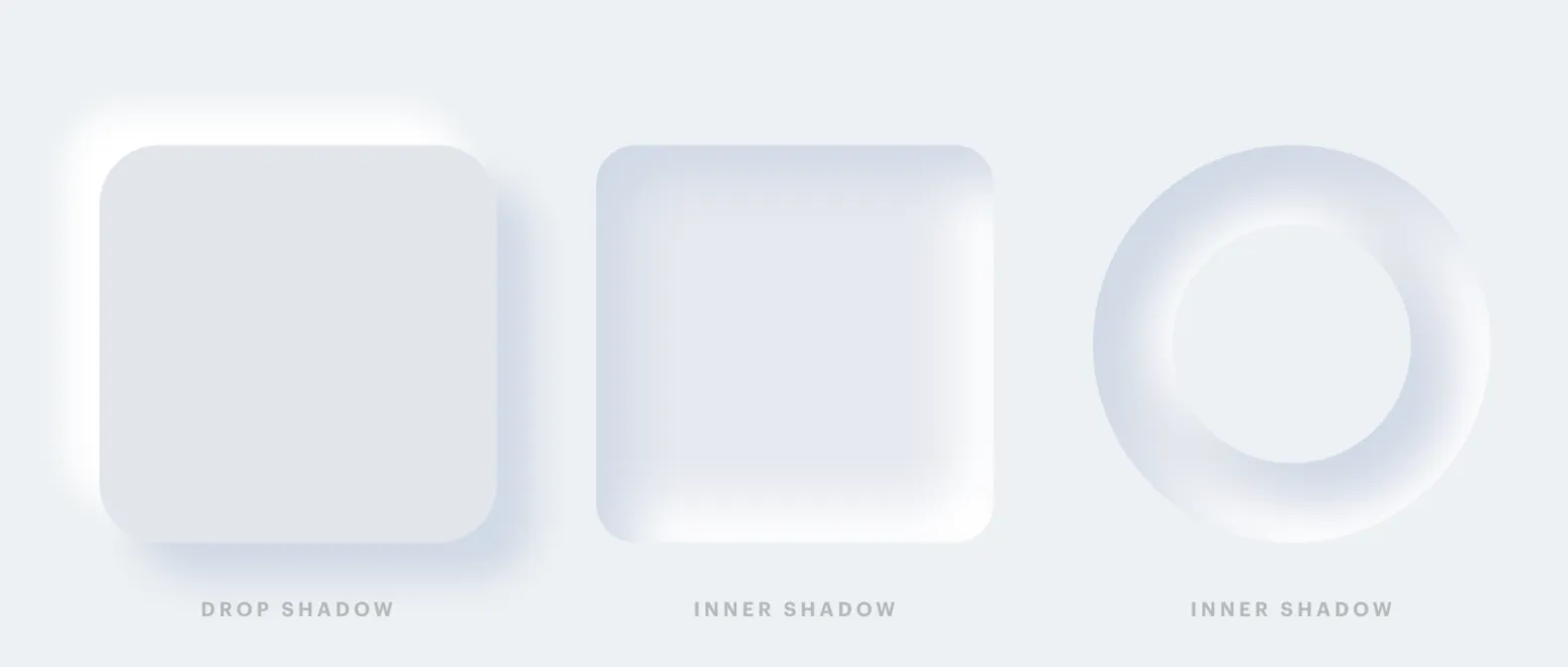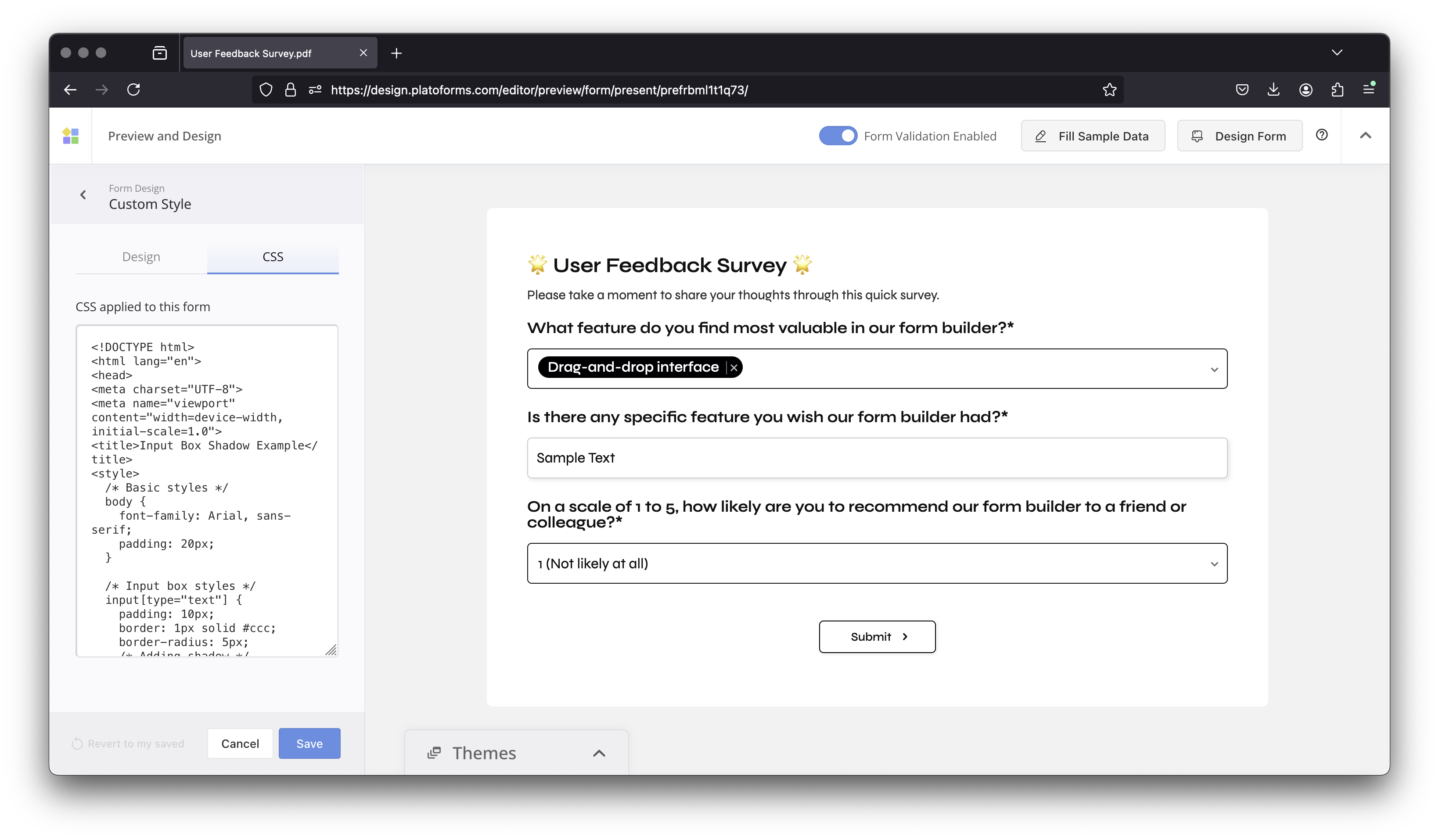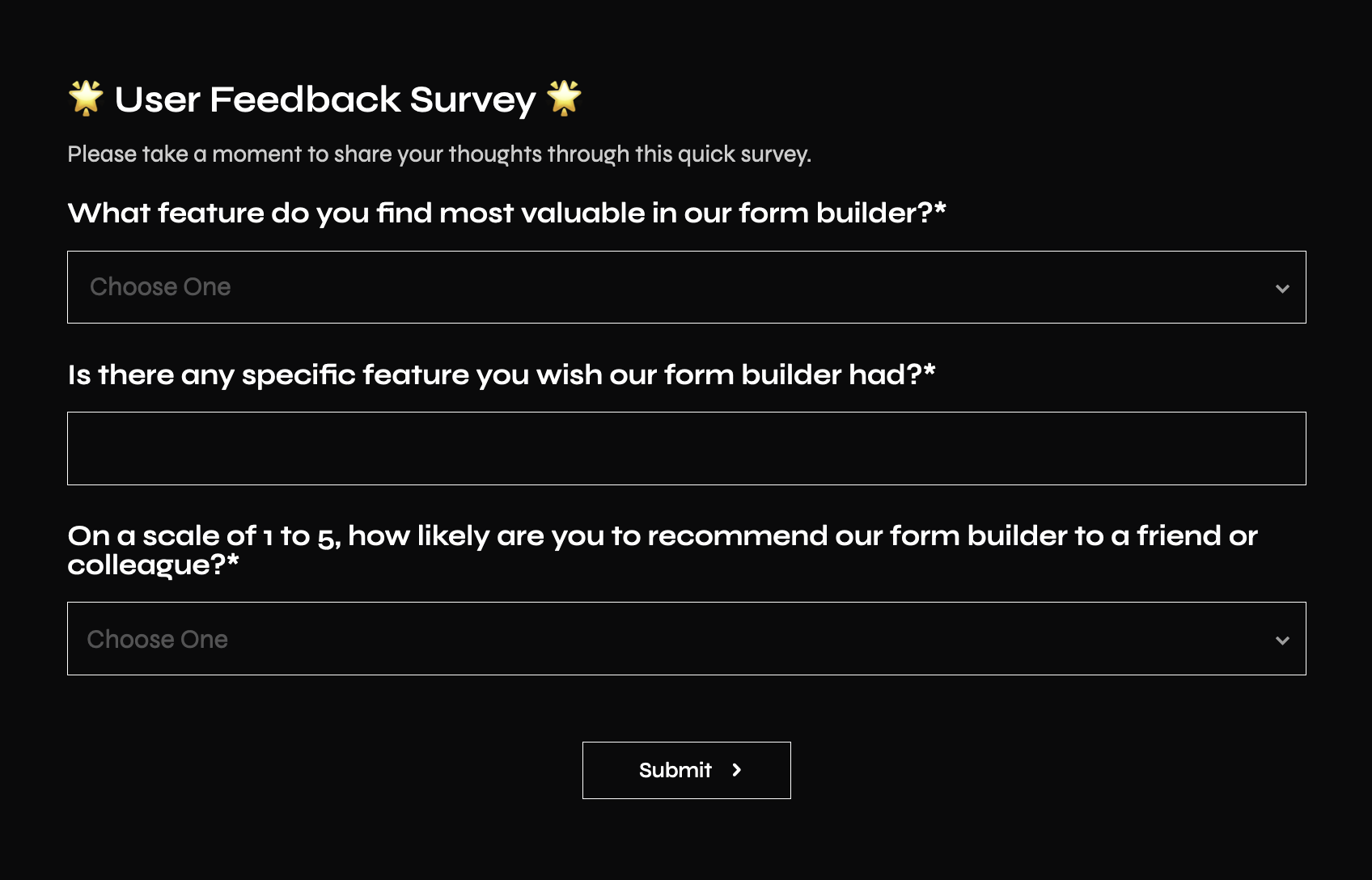
As web design trends continue to evolve, so do the ways we create user-friendly and visually appealing online forms. In 2025, the focus is on smarter, faster, and more inclusive designs that leverage cutting-edge technologies. Let’s explore the top trends shaping form design in 2025 and how you can apply them to your forms using PlatoForms.
What we will cover:
1. Neumorphism (New Skeuomorphism)
What is Neumorphism?
Neumorphism is a design style that combines the best of flat design and skeuomorphism. It uses soft shadows and highlights to make elements appear realistic and tactile, almost as if they’re extruded from the background.

Read more: Neumorphism in user interfaces
How to apply Neumorphism to online forms:
-
Soft shadows and highlights: Use gentle shadows around form fields and buttons to give them a 3D effect. This makes them look touchable and intuitive.
-
Intuitive inputs: Design form inputs that feel realistic and easy to understand at first glance.
-
Consistency: Keep the neumorphic style consistent throughout the form for a cohesive look.
PlatoForms makes it easy to incorporate neumorphic design into your forms. With support for custom CSS, you can add subtle shadows and highlights to input boxes, buttons, and other elements. For example, you can use CSS to create a soft shadow effect that becomes more pronounced when an input box is focused, helping users easily identify active fields. This not only enhances the visual appeal of your forms but also improves usability.

But why stop at CSS? In 2025, PlatoForms is taking form customization to the next level with JavaScript integration. This powerful new feature allows you to add dynamic, interactive elements to your forms, perfectly complementing the neumorphic design style. Imagine creating forms where shadows and highlights respond to user interactions in real-time, or where labels and fields dynamically adjust based on user input—all while maintaining the sleek, modern look of neumorphism.

2. Dark Mode Optimization
What is dark mode?
Dark mode is a color scheme that uses dark backgrounds and light text. It’s easier on the eyes, especially in low-light environments, and can save battery life on OLED screens.
How to optimize forms for dark mode:
-
Contrast and legibility: Ensure that text and input fields stand out against the dark background. High contrast is key to maintaining readability and user comfort.
-
Accent colors: Use bright colors for buttons, highlights, and important information to guide users through the form. This helps users quickly identify actions and critical information.
-
Eye comfort: Avoid overly bright elements and ensure smooth transitions between dark and light modes to prevent eye strain.
To make the most of dark mode, it’s essential to offer users flexibility in how they view your forms. PlatoForms provides several options to customize form appearance based on user preferences:

-
System auto: Adapts to the user’s device settings for a consistent look across applications. This means the form will switch between light and dark modes based on the user’s system settings.
-
Light mode only: Displays the form in a light theme, maintaining a consistent light-colored look regardless of the user’s device settings.
-
Dark mode only: Shows the form in a dark theme, providing a consistent darker color scheme for all users.
By optimizing your forms for dark mode and offering customizable appearance options, you can ensure that they are visually appealing and easy to use in any lighting condition.
Tip: Choosing “System Auto” ensures that your form is optimized for both light and dark environments, enhancing the user experience regardless of their preference. For more details, check PlatoForms User Guide.
3. Glassmorphism
What is Glassmorphism?
Glassmorphism involves using frosted glass-like elements with transparency and blurring effects. This creates a sense of depth and makes the interface feel more layered and interesting.
How to apply Glassmorphism to online forms:
- Frosted backgrounds: Use frosted, semi-transparent backgrounds for form sections. This gives a modern and sophisticated look.
- Transparency: Design input fields and buttons with a touch of transparency to create a layered effect.
- Hierarchy and focus: Use blurring effects to draw attention to active input fields and important buttons.
4. Micro Interactions and Animations
What are micro interactions?
Micro interactions are small animations or design elements that provide feedback to the user. They make interactions feel responsive and engaging.
How to use micro interactions in online forms:
-
Interactive feedback: Add subtle animations to show when a user interacts with a form field, like when they focus on an input or submit the form.
-
Guided interactions: Use animations to guide users through multi-step forms, indicating progression and next steps.
-
Engagement: Make the form-filling process more engaging with small, thoughtful animations.

PlatoForms takes micro interactions to the next level with its range of interactive form fields. Elements like sliders, videos, and embedded content act as micro interactions by offering dynamic, user-friendly ways to engage with forms:
-
Sliders: Allow users to easily select values or ranges through intuitive drag-and-drop actions, enhancing usability and precision.
-
Videos: Embed videos to provide visual instructions or additional information, making the form-filling process more informative and interactive.
-
Embedded content: Integrate maps, charts, or third-party tools directly into your forms, offering real-time interaction and improving user experience.
By leveraging these micro interaction elements in PlatoForms, you can create online forms that are not only functional but also engaging and enjoyable for users.
5. Sustainable and Inclusive Design
What is sustainable and inclusive design?
Sustainable design focuses on creating energy-efficient and environmentally friendly forms, while inclusive design ensures accessibility for all users, including those with disabilities.

How to design sustainable and inclusive forms:
-
Performance optimization: Design forms to load quickly and run efficiently, reducing server load and energy consumption.
-
Accessibility: Ensure forms are accessible to everyone, including keyboard navigation, screen reader compatibility, and proper labeling of input fields.
-
Responsive design: Make sure forms work well on all devices, from desktops to smartphones.
-
Inclusive language: Use clear and inclusive language in form labels and instructions to accommodate diverse user groups.
PlatoForms supports sustainable and inclusive design with features like multi-language switching and RTL (Right-to-Left) form functionality. These features ensure that your forms can be easily adapted for a global audience:
-
Multi-language switching: Allow users to switch between different languages, making your forms accessible to non-native speakers and enhancing user experience across different regions.
-
RTL form: Provide support for languages that are read from right to left, such as Arabic and Hebrew, ensuring that your forms are usable and accessible to a wider audience.
-
Accessibility across all platforms: From Google Chrome and Firefox to Safari, Edge, and Opera, our online fillable forms are designed to work seamlessly with all major browsers, ensuring faster loading times and a smooth user experience. But we don’t stop there — PlatoForms also offers device-friendly forms that look and function perfectly on mobile devices, providing an outstanding user experience for your customers no matter how they access your forms.
Practical Tips
Here’re the practical tips for online form design:
- Visual consistency: Apply a consistent design style, whether it’s neumorphism, dark mode, or glassmorphism.
- User feedback: Incorporate micro-interactions to give users immediate feedback, boosting their confidence and satisfaction.
- Accessibility: Prioritize accessible design to ensure everyone can use your forms, including people with disabilities.
- Performance: Optimize your forms to load quickly and reduce their environmental impact.
- Engagement: Use animations and interactive elements to make the form-filling process enjoyable and intuitive.
Conclusion
Incorporating the latest web design trends into your online forms can significantly improve user engagement and satisfaction. By embracing neumorphism, optimizing for dark mode, adding glassmorphism effects, integrating micro-interactions, and prioritizing sustainable and inclusive design, you can create forms that are not only functional but also visually appealing and user-friendly.
PlatoForms is here to help you stay ahead of the curve. Our platform offers the tools you need to create modern, responsive, and accessible forms that meet the demands of today’s users. Start designing smarter forms today with PlatoForms and elevate your user experience to the next level.




